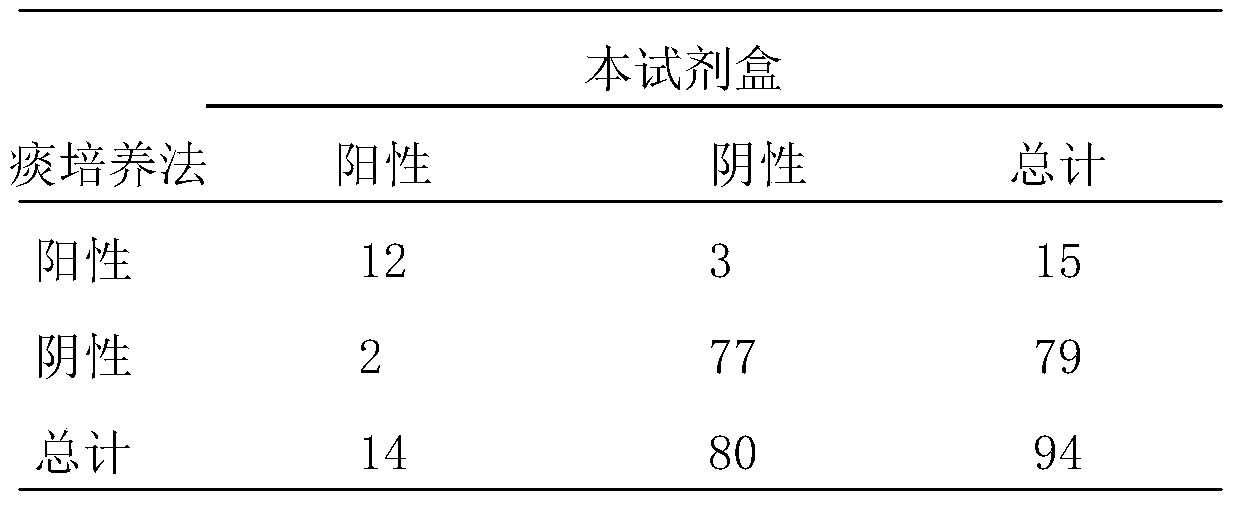Anti-human respiratory syncytial virus n protein antibody and immunochromatography kit using the antibody
A technology of syncytial virus and immune chromatography, applied in the field of biomedicine, can solve the problems of low titer, low specificity, and low purity
- Summary
- Abstract
- Description
- Claims
- Application Information
AI Technical Summary
Problems solved by technology
Method used
Image
Examples
Embodiment 1
[0071] Embodiment 1 Preparation of two kinds of rabbit anti-human respiratory syncytial virus N protein antibodies
[0072] The preparation methods of two kinds of rabbit anti-human respiratory syncytial virus N protein antibodies are as follows:
[0073]1) After structural biological analysis and related experimental research, a short peptide composed of 14 amino acids at positions 21-34 and 14 amino acids at positions 226-239 of human respiratory syncytial virus N protein (GenBank sequence number AAB59852.1) was selected As two linear epitopes for preparing rabbit anti-human respiratory syncytial virus N protein antibody respectively, the two amino acid sequences are SKYTIQRSTGDSID and FGIAQSSTRGGSRV respectively, and these two sequences are respectively named N1 and N2;
[0074] 2) After adding a cysteine to the C-terminal of N1 and the N-terminal of N2 of the amino acid sequence described in step 1), respectively synthesize and purify the polypeptides with an automatic p...
Embodiment 2
[0081] Example 2 Preparation and Application of Immunochromatography Kit Based on Quantum Dot Labeling Technology
[0082] 1. Quantum dot-labeled antibody AbN1
[0083] Add 0.4nmol carboxyl water-soluble quantum dots and 800nmol carbodiimide (EDC) to the microcentrifuge tube successively, make the volume to 1ml with MES buffer (10.66g / L MES, 0.74g / L EDTA pH 7.4), keep Mix the solution with ground and react at 37°C for 5 minutes, then add 0.34 mg of the antibody AbN1 prepared in Example 1, react in the dark for 2 hours, and add single-terminal amino polyethylene glycol (PEG2000-NH2) to a final concentration of 1% (m / v), block the unreacted activated carboxyl site, and continue to react in the dark for 1h. The reacted sample was centrifuged with an ultrafiltration tube (molecular weight cut-off 100k) at 6500rpm for 5min to a volume of 200ul. The ultrafiltered sample was transferred to an ordinary EP tube and centrifuged to remove aggregates (10000rpm, 3min). Add the supernata...
Embodiment 3
[0106] Example 3 Preparation and Application of Immunochromatography Kit Based on Colloidal Gold Labeling Technology
[0107] 1. Colloidal gold-labeled antibody AbN1
[0108] a. Preparation of 30nm colloidal gold
[0109] Take a siliconized 250ml Erlenmeyer flask, add 99ml ultrapure water, add 1% (m / v) HAuCl4 solution therein and mix evenly, heat in an oil bath and stir until boiling. 2ml of 1% (m / v) trisodium citrate aqueous solution was quickly added thereto, and the solution continued to boil for 10 min (the solution turned from blue to red during this process). Stop heating, let the solution cool down to room temperature naturally, then add ultrapure water to it to make up to 100ml.
[0110] b. Colloidal gold-labeled antibody AbN1
[0111] 1) Take a siliconized 50ml Erlenmeyer flask, add 10ml of the colloidal gold solution prepared in step a, add 240ul 0.2mol / L K to the gold solution 2 CO 3 Adjust the pH to 8.5;
[0112] 2) Add the antibody AbN1 into the colloidal go...
PUM
| Property | Measurement | Unit |
|---|---|---|
| thickness | aaaaa | aaaaa |
| water absorption | aaaaa | aaaaa |
| diameter | aaaaa | aaaaa |
Abstract
Description
Claims
Application Information
 Login to View More
Login to View More - R&D
- Intellectual Property
- Life Sciences
- Materials
- Tech Scout
- Unparalleled Data Quality
- Higher Quality Content
- 60% Fewer Hallucinations
Browse by: Latest US Patents, China's latest patents, Technical Efficacy Thesaurus, Application Domain, Technology Topic, Popular Technical Reports.
© 2025 PatSnap. All rights reserved.Legal|Privacy policy|Modern Slavery Act Transparency Statement|Sitemap|About US| Contact US: help@patsnap.com



